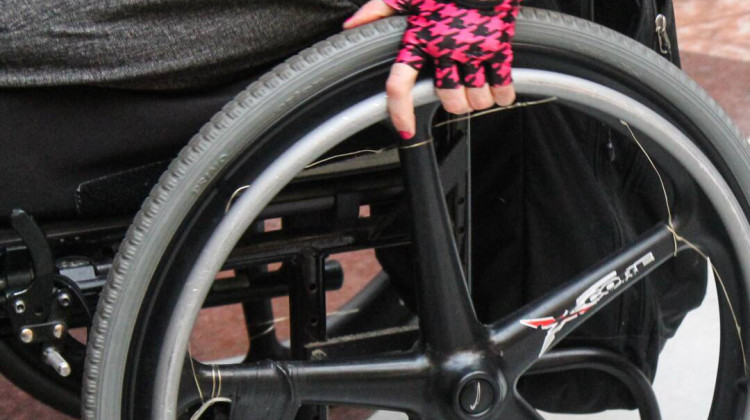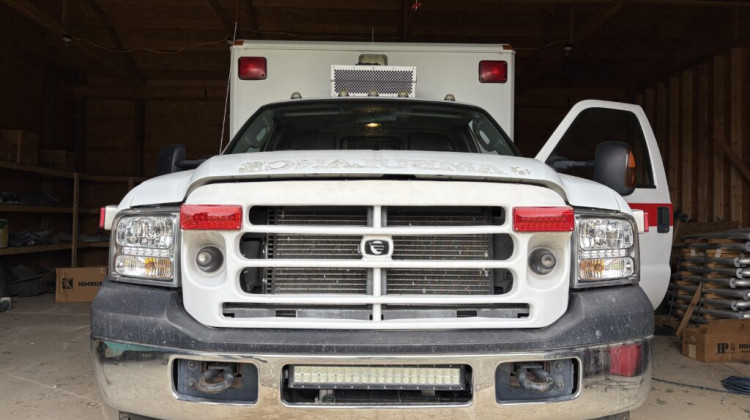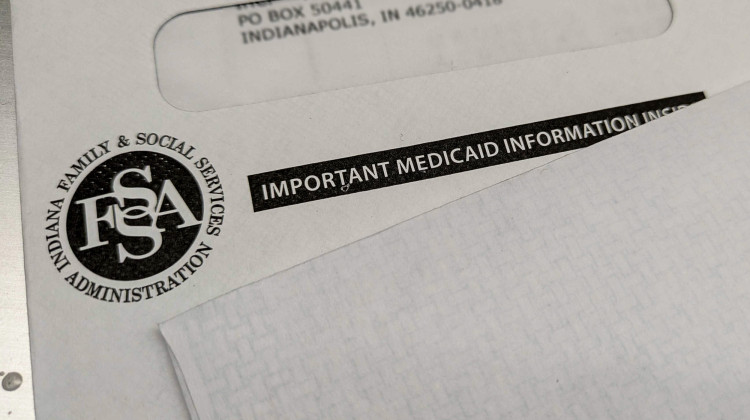
Brittany Mostiller, leadership development coordinator at the National Network of Abortion Funds, speaks on a panel about U.S. Supreme Court Justice Brett Kavanaugh’s possible impact on abortion rights.
Submitted photo
Dan Gorenstein, Ryan Levi – Tradeoffs
Kim Floren has spent the last several weeks trying to comfort people panicking about the end of Roe v. Wade.
“Everybody has been on the spectrum from just being in tears to total panic about what they're going to do,” said Floren, who runs South Dakota’s Justice Through Empowerment Network, one of more than 100 independent abortion funds around the country.
Abortion funds raise and distribute money to people who need help paying for abortions, including procedure and travel costs. In 2020, funds across the country helped nearly 45,000 people pay for abortions.
Most funds serve specific states or regions, while others focus on particular populations like Indigenous women. Some, like Floren’s, are run entirely by volunteers. Others are part of clinics or larger organizations like Planned Parenthood.
Some abortion funds have been around for decades, but their importance to abortion access is growing in a post-Roe world, especially in states like South Dakota that now ban abortion.
“They're going to be really vital for people to access legal abortion out of state,” said Gretchen Ely, a professor of social work at the University of Tennessee and one of the country’s few abortion fund researchers.
Ely’s research has shown that abortion funds primarily serve people in their 20s who already have kids and often lack full-time work, stable housing and safe relationships. She also found that about half of abortion fund clients are Black, compared to around one-third of overall abortion seekers.
“They serve people who have the greatest needs,” Ely said.

Abortion funds provide more than money
Brittany Mostiller first learned about abortion funds in 2007.
She was 23 years old and sharing a two-bedroom apartment on the South Side of Chicago with her three kids, her sister and her niece. She had just carried an unplanned pregnancy to term in February, which she said pushed her into a depression. Things got worse in July when she found out she was pregnant again.
“Everything just felt like it was caving in,” she said of her life at the time. “I felt stuck. I wanted something more. I wanted to offer my children something more.”
Mostiller didn’t have enough money for an abortion, which can cost anywhere from a few hundred to a few thousand dollars, depending on where you live and how far along the pregnancy is. At the time, Illinois’ Medicaid program didn’t cover abortions, something that’s still true in 34 states and Washington D.C.
Mostiller reached out to the nonprofit Chicago Abortion Fund, which was able to cover about one-third of what ended up being a $900 abortion. They sent the money directly to Mostiller’s clinic. Abortion funds often pay for only part of a client’s abortion, in hopes of stretching their limited dollars to help as many people as possible.
Mostiller said the financial support from the abortion fund prevented her from taking more drastic actions she’d considered — like throwing herself down the stairs or having her 5-year-old daughter pounce on her stomach to force a miscarriage. But she said the fund gave her much more than money.
“I felt really held on that call and seen in a way that I had never ever felt,” she said. “It gave me hope. Shit was rough, and they were like this light.”
Mostiller started volunteering with the Chicago Abortion Fund, and by 2015, she was its executive director. She now works as the leadership development coordinator at the National Network of Abortion Funds.
She said funds have been preparing for the fall of Roe since Donald Trump was elected president six years ago.
“It’s just real now,” she said. “They need all the support they can get.”
More money, more need
In the first three weeks after the Supreme Court overturned Roe v. Wade, the National Network of Abortion Funds raised nearly $11 million for local funds, more than all abortion funds in the network distributed in 2020.
But demand is also rising, said Floren of the South Dakota fund. She said she got nearly as many calls in the first week of July as she did in all of April, including several from people outside of South Dakota desperate to find anyone who could help.
Callers are asking for more money too, according to Floren. Fewer clinics doing abortions means longer delays, which can drive up a procedure’s cost. And since everyone in South Dakota has to leave the state to get an abortion, travel costs (known as “practical support”) are also going up.
“By the time you count in somebody who has to drive 600 miles and then stay two or three nights in a hotel, and then they have to eat that whole time while they're there … a lot of times the practical support costs just as much as the actual funding for the abortion,” Floren said.
Floren estimates she’s already doled out at least $5,000 in practical support since a draft of the Supreme Court decision leaked in May. That’s more than she spent on travel costs all last year. She regularly reaches out to other abortion funds to try to cobble together enough funding for callers.
“You just try to make it a little bit easier [for callers] because it's already so difficult,” she said.
Unprecedented fear and uncertainty
Floren and other abortion fund leaders say the biggest change they’ve seen post-Roe is how scared and unsure the people who call them are.
“I've had people come up to me and say, ‘I'm afraid to call you all because I don't want my line getting tapped. I don't want to go to jail. I don't want to be arrested,’” said Erin Smith, executive director of the Kentucky Health Justice Network.
While their fund serves all Kentuckians, the organization focuses especially on transgender and nonbinary people who are often left out of the abortion conversation. Smith said working with these marginalized patients has prepared them for the bigger role they find themselves in post-Roe.
“We are a huge information hub,” Smith said. “Making sure that not only are we calling our callers and reassuring our callers, [but] that we're reassuring the community, that we're letting the community know what we can and can't do or what they can and can't do.”
Funds are dealing with their own fear and uncertainty too. Texas funds have temporarily stopped paying for abortions, unsure if they can legally operate under the state’s restrictive laws. At least one other fund in Alabama has done the same. The National Network of Abortion Funds is offering grants to help funds hire lawyers.
It’s just another thing to worry about for funds that were already struggling to meet demand before Roe was overturned. Survey data from the National Network of Abortion Funds show about half of the people who call abortion funds don’t receive any financial support. Fund leaders are concerned that donations will slow while demand stays high.
“I just feel like it's going to get worse before it gets better,” Floren said. “And I don't think anybody really knows what that's going to look like. And that's the scary part.”
This story comes from the health policy podcast Tradeoffs, a partner of Side Effects Public Media. Dan Gorenstein is Tradeoffs’ executive editor, and Ryan Levi is a reporter/producer for the show, which ran this story on July 21. Tradeoffs' coverage of health care costs is supported, in part, by Arnold Ventures and West Health.
9(MDAyMzk1MzA4MDE2MjY3OTY1MjM5ZDJjYQ000))
 DONATE
DONATE








 Support WFYI. We can't do it without you.
Support WFYI. We can't do it without you.